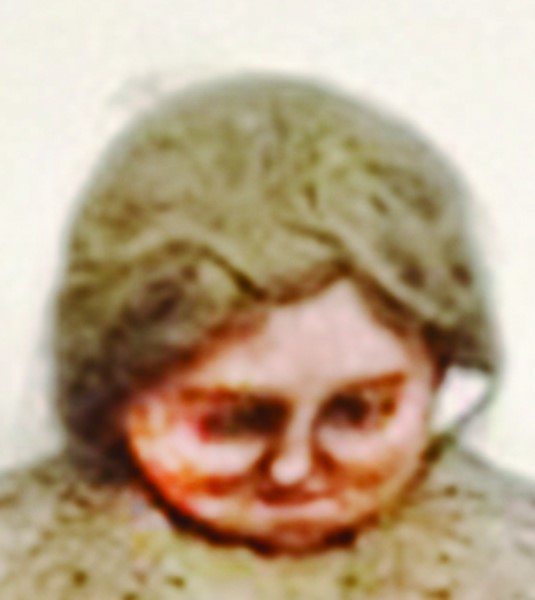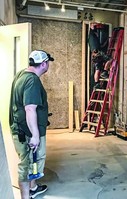Preserve or restore, that is the question
In the world of artifacts, there is a philosophical divide: should they be preserved in the state in which they were found or should they be repaired and restored? If you’ve ever been to Pompeii, or the Acropolis, or even a castle in England, you know that this decision has to be made.
Here is an example of such a dilemma at the Rhode Island Jewish Historical Association:
In the picture, you see a mannequin of an elegantly dressed middle-aged woman. Her hair is carefully combed back from her round face and put up in a bun, her clothes are meticulously tailored. She is from the early 20th century, and during her heyday, she would have stood on a peddler’s cart as an advertisement for a tailor.
RIJHA’s journal, Notes, from November 1988, shows similar mannequins that were owned by Abraham Abramowitz, a tailor who had a store at 413 Westminster St. in Providence.
But a closer look reveals that our lady is in really poor condition: instead of staring proudly ahead, she is gazing at the ground; her fingers are broken; her dress is partly shredded.
What should we do?
Preserve? Restore?
Restoring this lady to her former state of elegance at first seemed like the best idea. I took pictures of her, since she is too fragile to move, and went to a doll hospital in Seekonk. The owner said the mannequin was beyond her capabilities, and gave me the name of a restorer near Boston. I sent her pictures of the mannequin, and again was told that she was too far gone. That ended the restoration idea.
So now, the question was, how to preserve her in her current state, so that she would not further deteriorate. She is 36 inches tall; a standard curio cabinet is either 33 inches high or much, much larger. Trophy and display cases were also not suitable: we wanted a case that was all glass to showcase her.
Finally, this being Rhode Island, I found a curio cabinet at Ocean State Job Lot that fit most of our needs; with some modifications and good luck, it will be the lady’s home soon.
But while putting our lady in the case preserves her, it does not restore her – will it really show people what she originally looked like? This led to another idea: purchase a doll about the same size as the mannequin and dress her in a new copy of the old clothes. But the problem here is that dolls this size are modeled after babies or little girls, not a mature woman.
Hanging a re-created outfit on a new mannequin also presents problems since store-display mannequins are either life-size or just simply individual life-sized body parts.
Another idea was to use a smaller doll, and yet another was to sew a copy of the garment as it would have looked and display it on a hanger next to the mannequin. This is a compromise: the doll is not restored, but she is preserved and her clothing is restored.
To date, while all these options are being pondered, no decisions have been made about the mannequin’s future. But come to the opening of our new office, at the Alliance’s Dwares Jewish Community Center, in Providence, later this summer and you just might see our lady in her new home, too!
RUTH BREINDEL is president of the Rhode Island Jewish Historical Association. You can reach the RIJHS office at 401-331-1360 or info@rijha.org. The library and archives are open to the public Monday through Friday.













